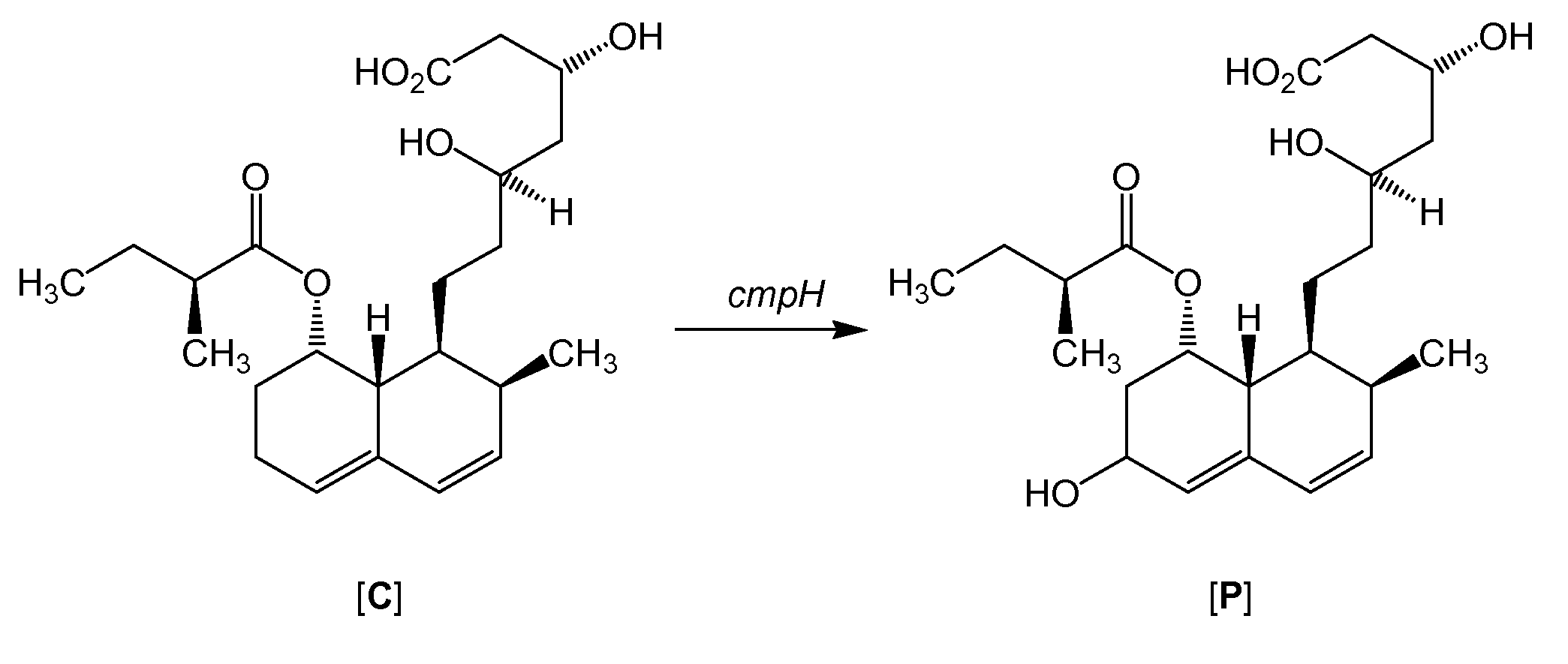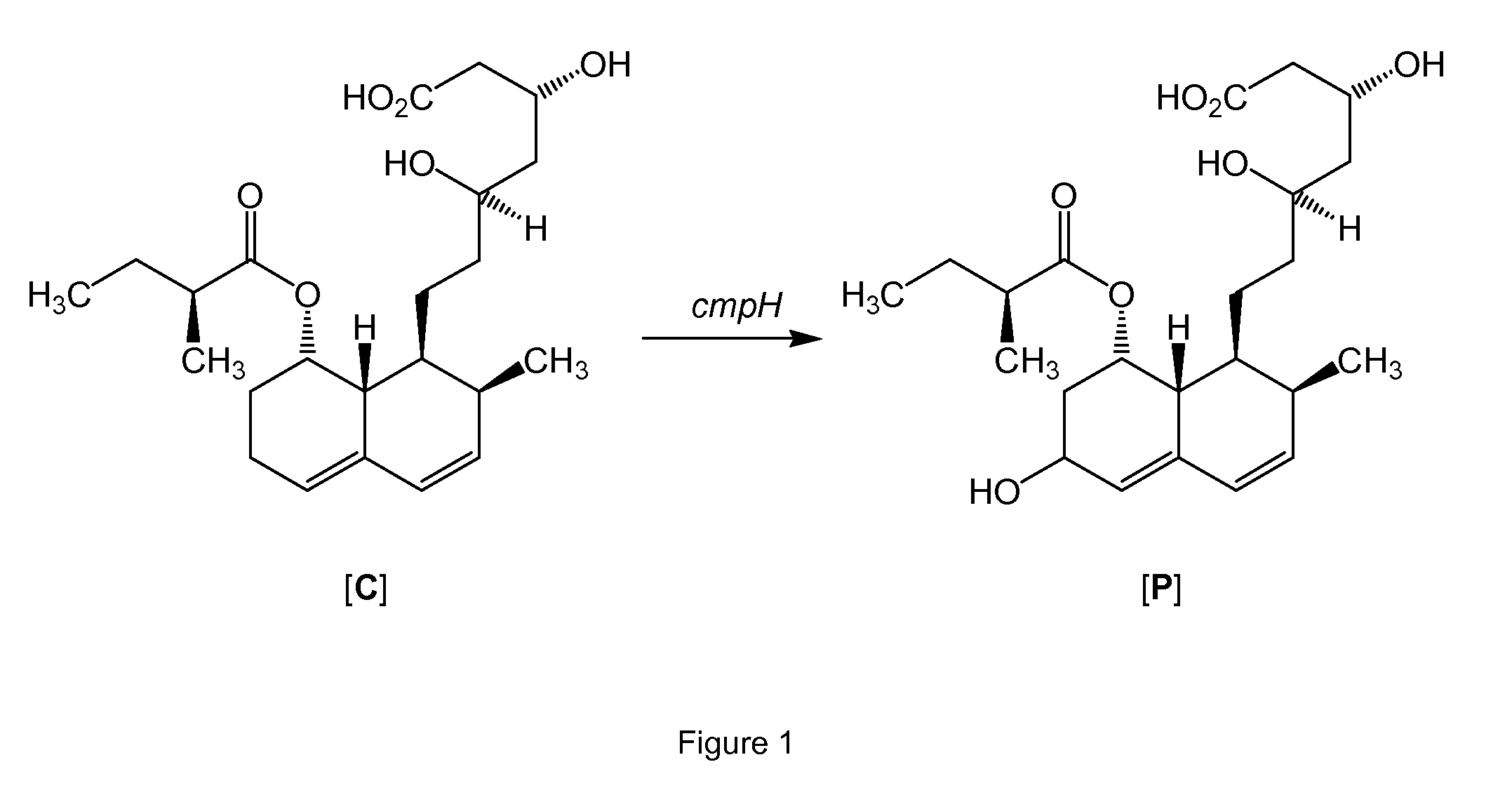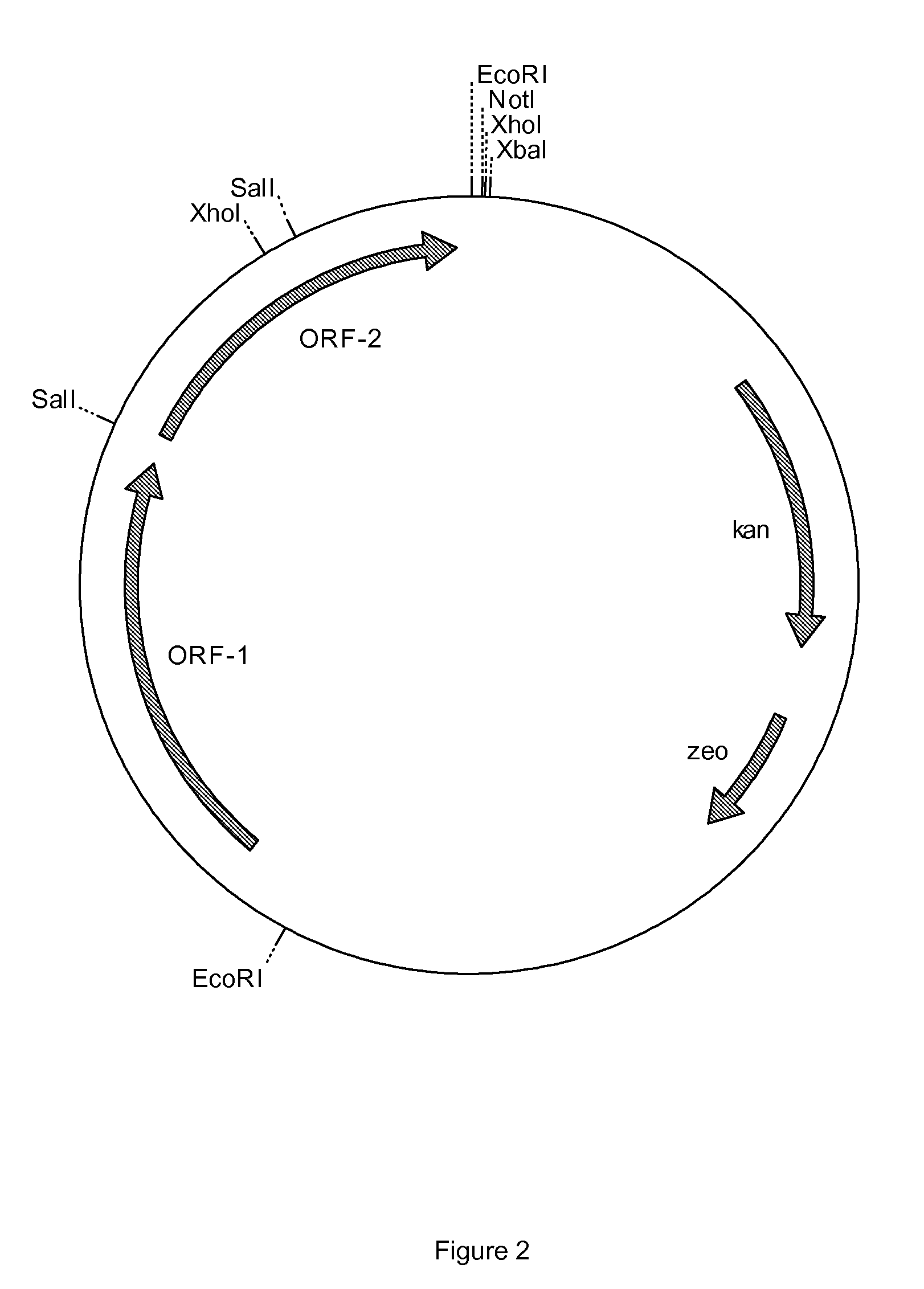Process for preparing pravastatin
a technology of pravastatin and pravastatin powder, which is applied in the field of pravastatin production methods, can solve the problems of low oxygen transfer rate, low fermentation output, and far from optimal processing process
- Summary
- Abstract
- Description
- Claims
- Application Information
AI Technical Summary
Benefits of technology
Problems solved by technology
Method used
Image
Examples
example 1
Screening for Efficient Whole-Cell Compactin to Pravastatin Bioconversion
[0083]Diverse prokaryotic and fungal species (Table 1) were tested to isolate a species with improved conversion from hydrolyzed compactin. All species were pre-cultured for 1-3 days (depending on the growth rate of the species) in 25 ml 2×YT medium, washed and suspended in 25 ml fresh 2×YT medium. After an adaptation period of several hours while shaking at 280 rpm and 30° C., hydrolyzed compactin was added at final concentrations of 0.1, 0.2, 0.5 and 1 mg / ml. After 24 h incubation the broths were collected by transferring the content of the shake flasks into a 50 ml Greiner tube.
[0084]Samples were frozen at −20° C., followed by freeze drying. The statins were extracted by addition of 1-2 ml methanol to the freeze-dried samples, followed by repeated vortexing. The solids were separated from the liquid phase by centrifugation. 200 μl of the methanol-extract was transferred into an HPLC vial followed by HPLC ana...
example 2
Biological Hydrolysis of Compactin
[0086]To establish if the species described in Example 1 could also hydrolyze and / or hydroxylate compactin in lactone-form, four selected species were pre-cultured for 1-3 days (depending on the growth rate of the species) in 25 ml 2×YT medium, washed and resuspended in 25 ml fresh 2×YT medium. After adaptation for several hours while shaking at 280 rpm and 30° C., non-hydrolyzed compactin was added at 0.2 mg / ml. After 24 h incubation the broths were collected by transferring the content of the shake flasks into a 50 ml Greiner tube. Samples were frozen at −20° C., followed by freeze drying. The statins were extracted by addition of 1-2 ml methanol, followed by repeated vortexing. The solids were separated from the liquid phase by centrifugation. 200 μl of the methanol-extract was transferred into an HPLC vial followed by HPLC analysis as described in Example 1. All four species (Actinokineospora riparia, Escherichia coli, Streptomyces carbophilus a...
example 3
Amycolatopsis Orientalis has Very Efficient Compactin Hydroxylation
[0087]From Example 1 it was concluded that Amycolatopsis orientalis was superior for compactin hydroxylation to Streptomyces carbophilus. For further study both species were pre-cultured for 24 h in 25 ml 2×YT medium, washed and resuspended in 25 ml fresh 2×YT medium. After several hours while shaking at 280 rpm and 30° C., hydrolyzed compactin was added at 0.1 and 0.2 mg / ml. After 24 h incubation the broths were collected by transferring the content of the shake flasks into a 50 ml Greiner tube. Samples were frozen at −20° C., followed by freeze drying. The statins were extracted by addition of 1-2 ml methanol to the dried samples, followed by repeated vortexing. The solids were separated from the liquid phase by centrifugation. 200 μl of the methanol-extract was transferred into an HPLC vial followed by HPLC analysis as described in Example 1. As can be seen from Table 3, Amycolatopsis orientalis is capable of conv...
PUM
| Property | Measurement | Unit |
|---|---|---|
| concentration | aaaaa | aaaaa |
| concentrations | aaaaa | aaaaa |
| concentrations | aaaaa | aaaaa |
Abstract
Description
Claims
Application Information
 Login to View More
Login to View More - R&D
- Intellectual Property
- Life Sciences
- Materials
- Tech Scout
- Unparalleled Data Quality
- Higher Quality Content
- 60% Fewer Hallucinations
Browse by: Latest US Patents, China's latest patents, Technical Efficacy Thesaurus, Application Domain, Technology Topic, Popular Technical Reports.
© 2025 PatSnap. All rights reserved.Legal|Privacy policy|Modern Slavery Act Transparency Statement|Sitemap|About US| Contact US: help@patsnap.com



